Taiwan IP Court Overturned Taiwan IPO’s Decision Regarding Determination on Inventive Step
Date: 5 January 2024
【Volume 126】
Recently, Taiwan Intellectual Property and Commercial Court (IPCC, IP Court) reversed the determination of Taiwan Intellectual Property Office (IPO) about the invalidation decision on a utility model patent (Taiwan Intellectual Property Court 2023 XingZhuanSuZi No. 9 Judgment). In this case, the IP Court revised the approach of the IPO to determine the “factors negating inventive step”, including “motivation to combine the multiple citations”, “simply changing”, “the determination of the efficacy of the invalidation exhibits”, etc. This ruling provides IP Court’s insights and is worth noting. The details are provided as below.
Case Facts
In this case, an invalidation action was filed against the utility model patent “Construction Formwork Component” (TWM560498, ‘498 patent), and it was asserted that claims 1-8, 10, and 12 of the ‘498 patent were obvious. After examination, the IPO invalidated some of the claims with the reason of lacking an inventive step. Dissatisfied with the IPO’s decision, the patentee appealed to the IP Court. Finally, the IP Court overturned the IPO’s judgment, holding that claims 1-4, 6-8, and 10 of the ‘498 patent involved an inventive step.
The main technical features of the ‘498 patent
Claim 1 of the ‘498 patent recites: “A construction formwork component comprising: a plurality of metal formworks stacked in a stack direction so that the metal formworks together form a wall, each of the metal formwork comprises an inner face; and at least one support rod fixedly connects the plurality of the metal formworks to support the metal formwork and the wall;
further comprising at least one reinforcing component, which fixedly connects the inner faces of each of the metal formwork, and the reinforcing component singly extends its length in the direction of extension of the support rod, so that the reinforcing component connects the plurality of metal formworks stacked in the direction of extension of the support rod at the inner faces.
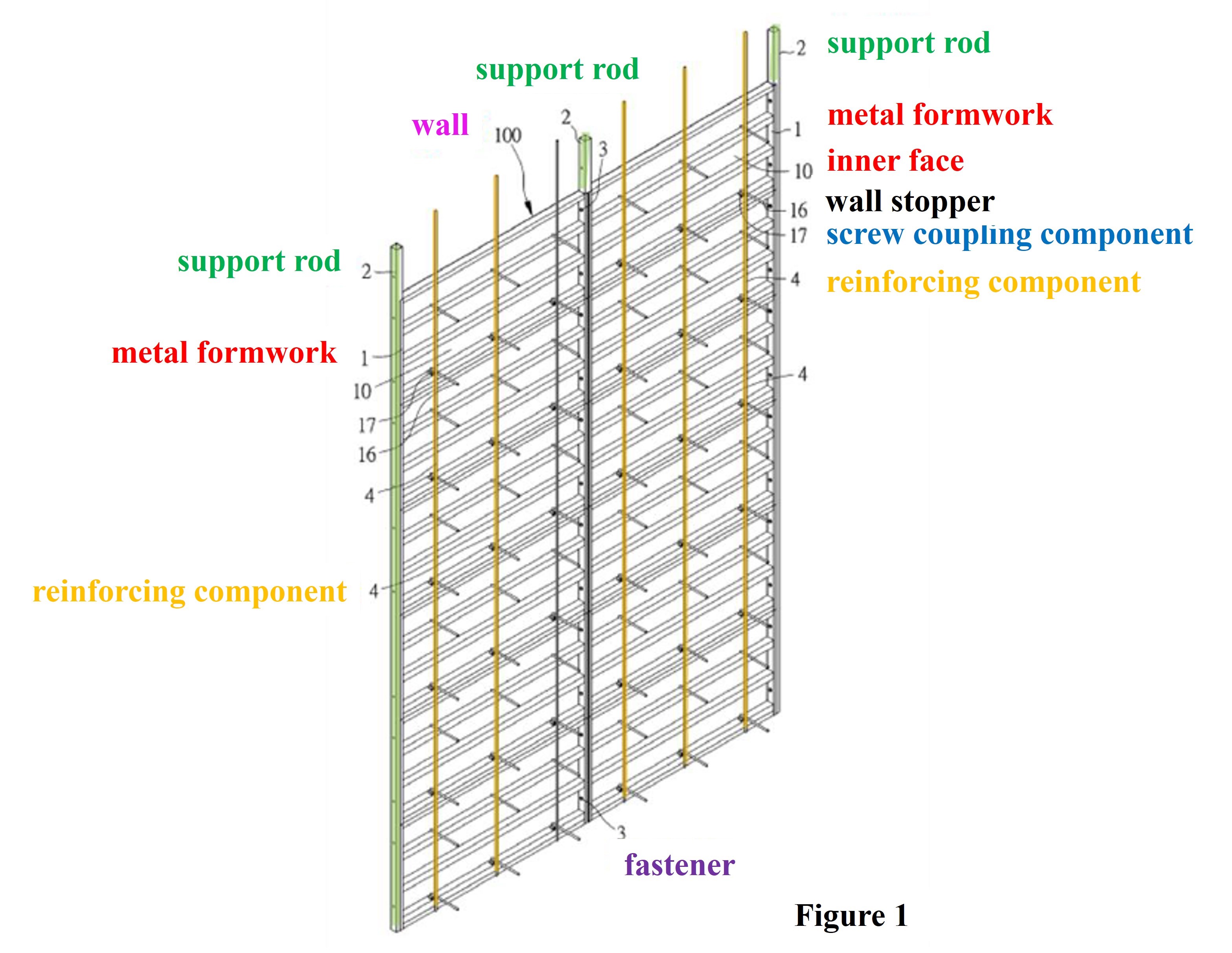
Three-dimensional schematic diagram of the embodiment in the ‘498 patent
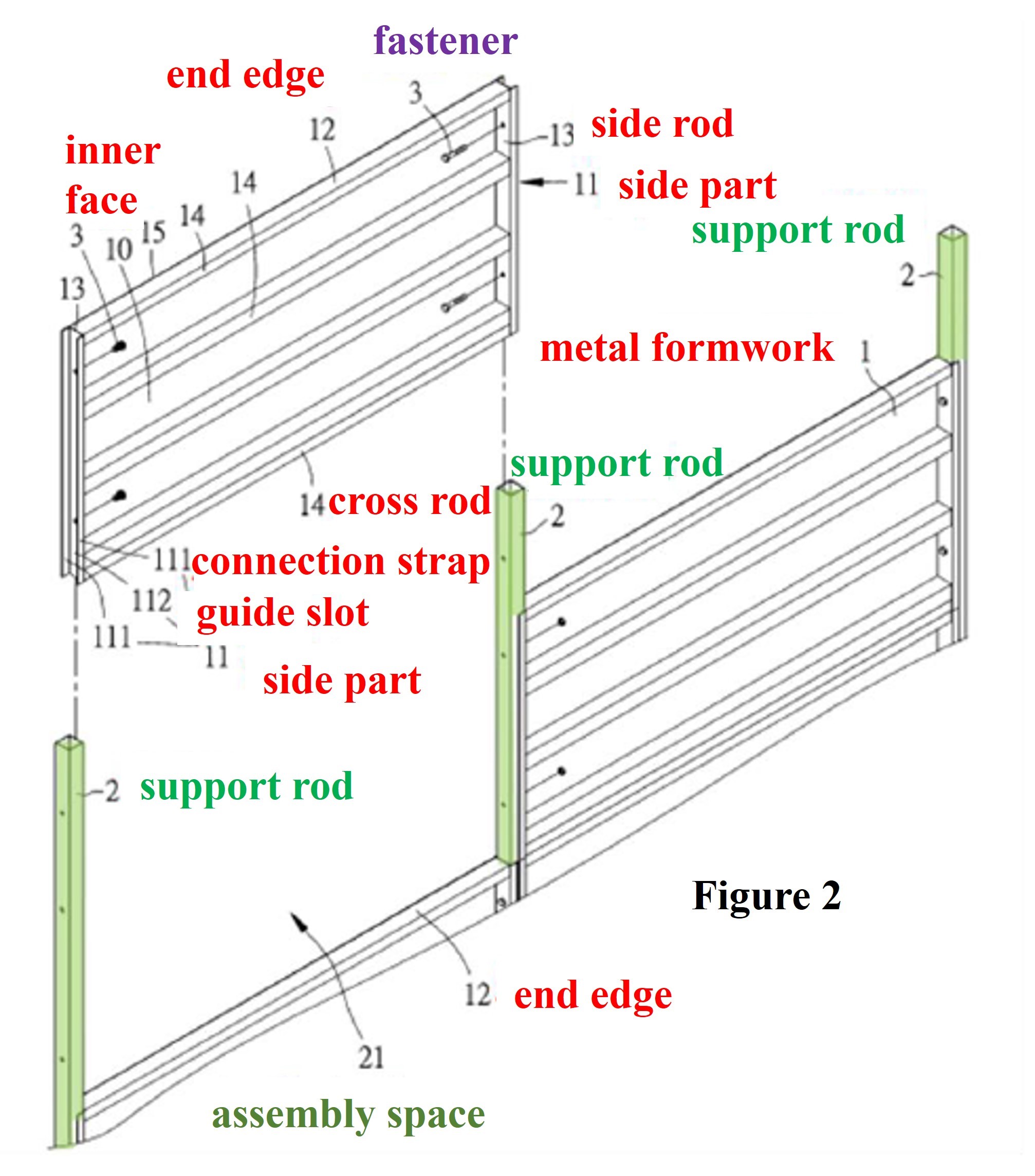
Exploded view of three-dimensional schematic diagram of the embodiment in the ‘498 patent
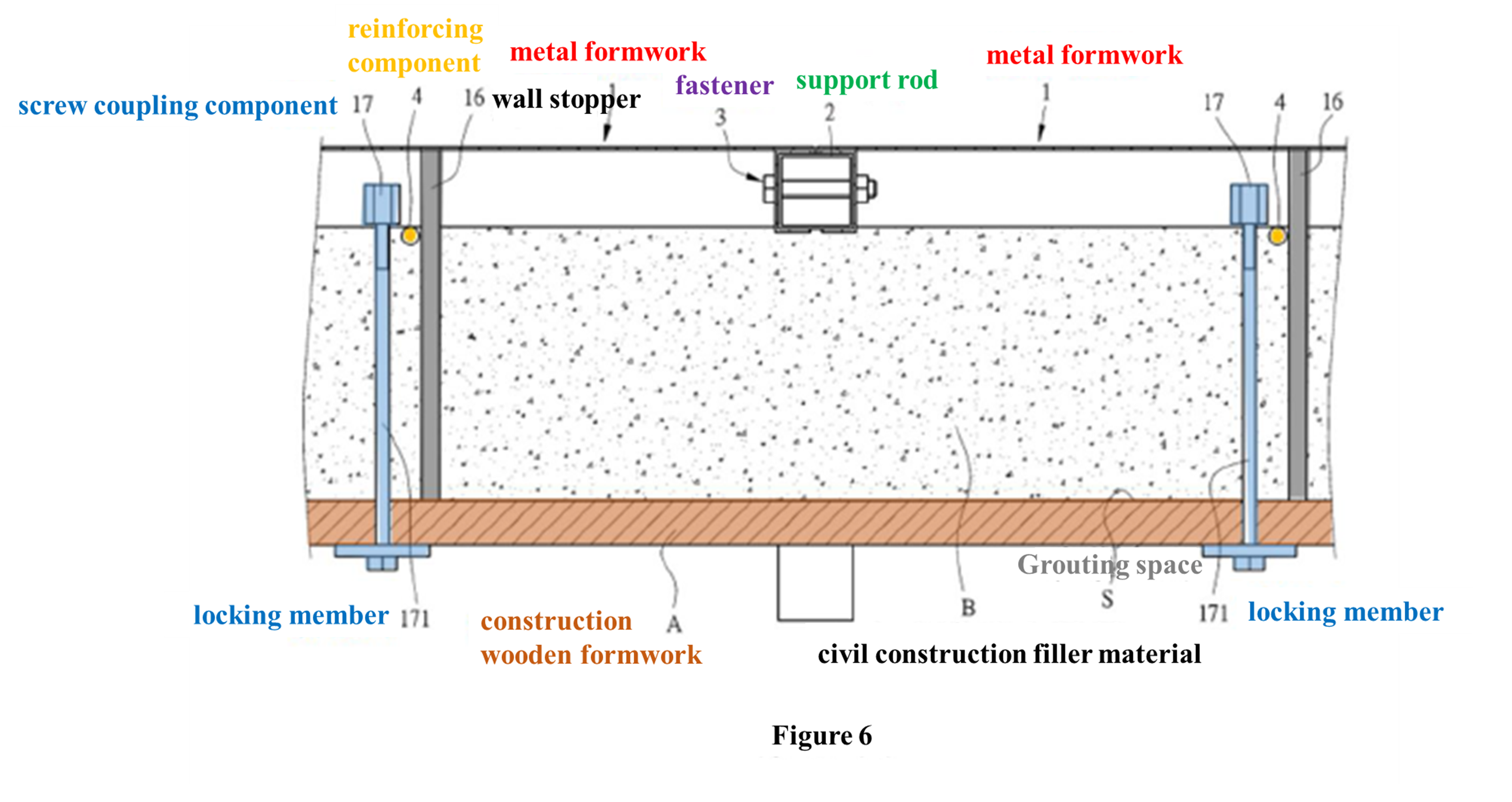
Cross section top view of the embodiment having the construction wooden formwork in the ‘498 patent
Invalidation Exhibits
1.Exhibit 2:
Taiwan Patent No. M535729 “Metal template of exterior wall with movable fastener” published on 21 January, 2017.
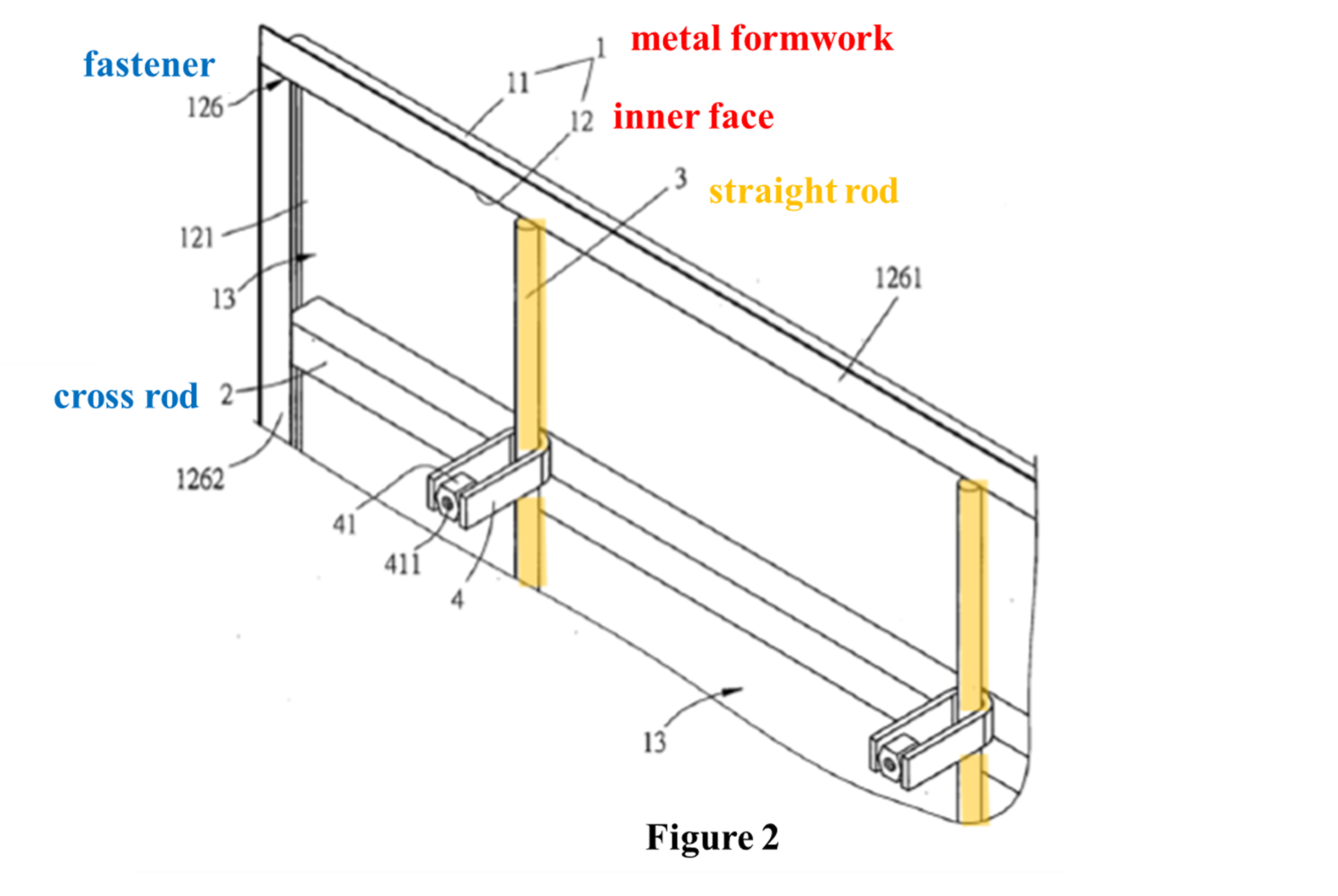
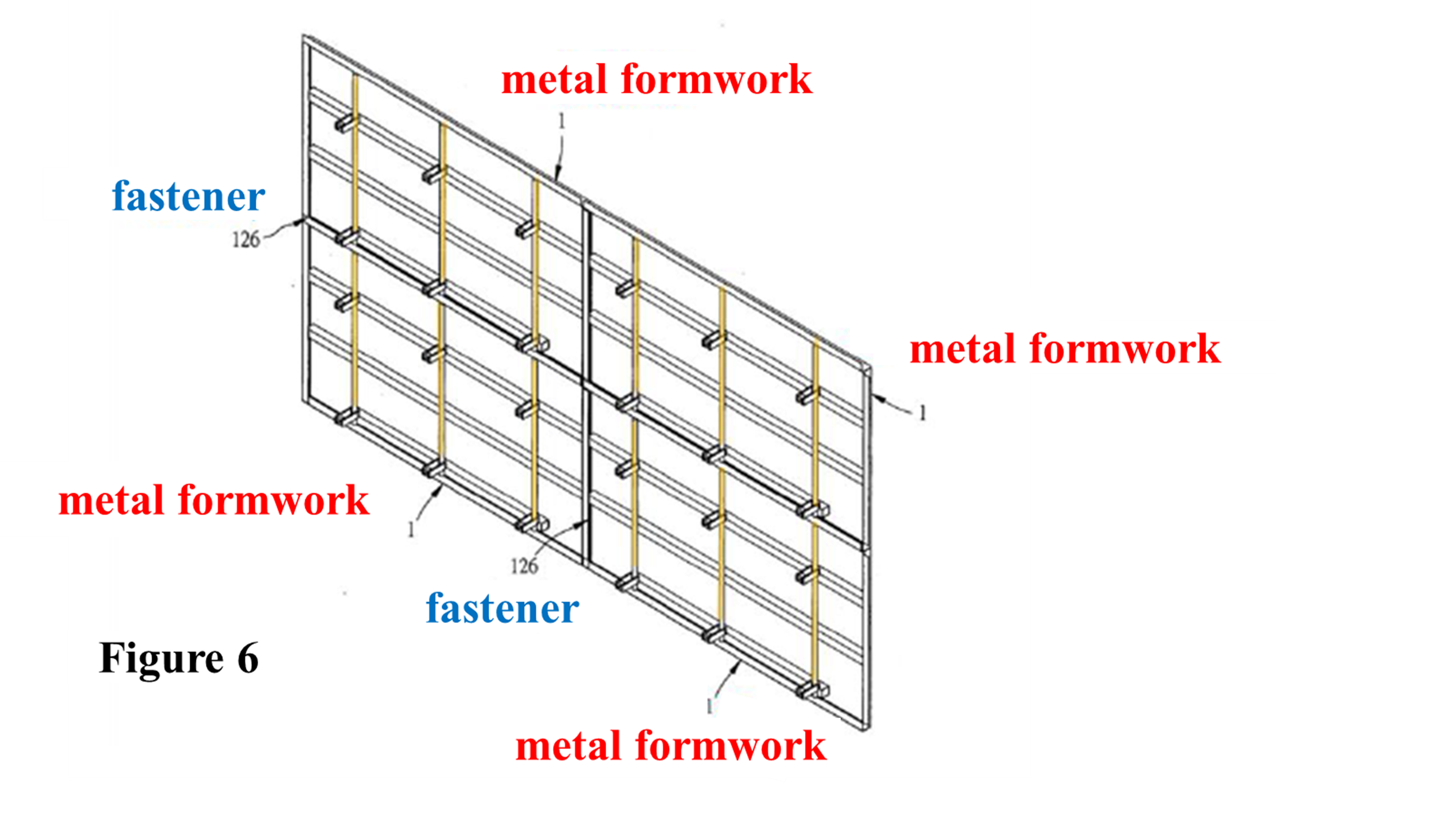
2.Exhibit 3:
Taiwan Patent No. M435483 “Systematized partition wall” published on 11 August, 2012.
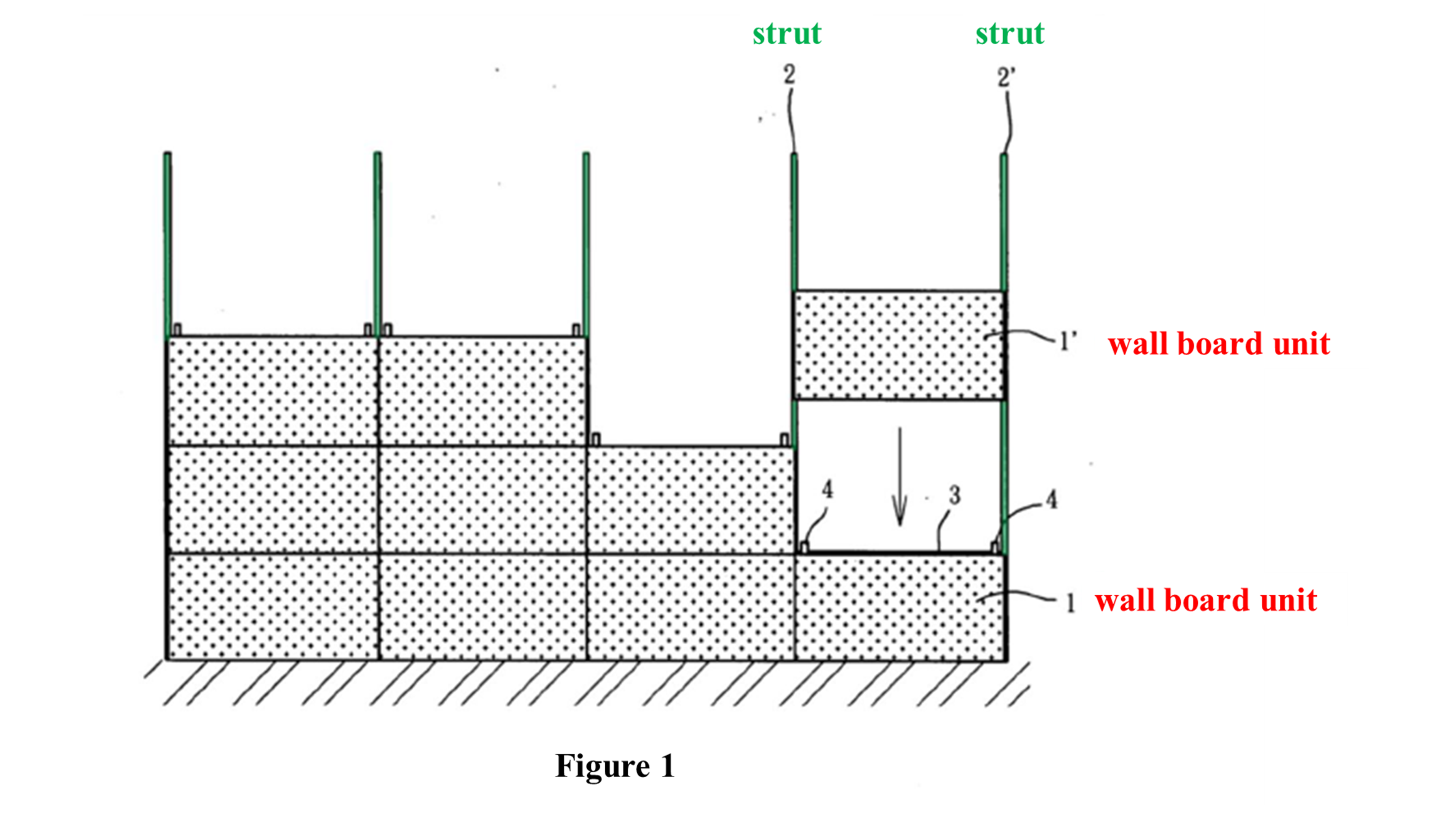
3.Exhibit 4:
Taiwan Patent No. M415936 “Partition/screen structure” published on 11 November, 2011.
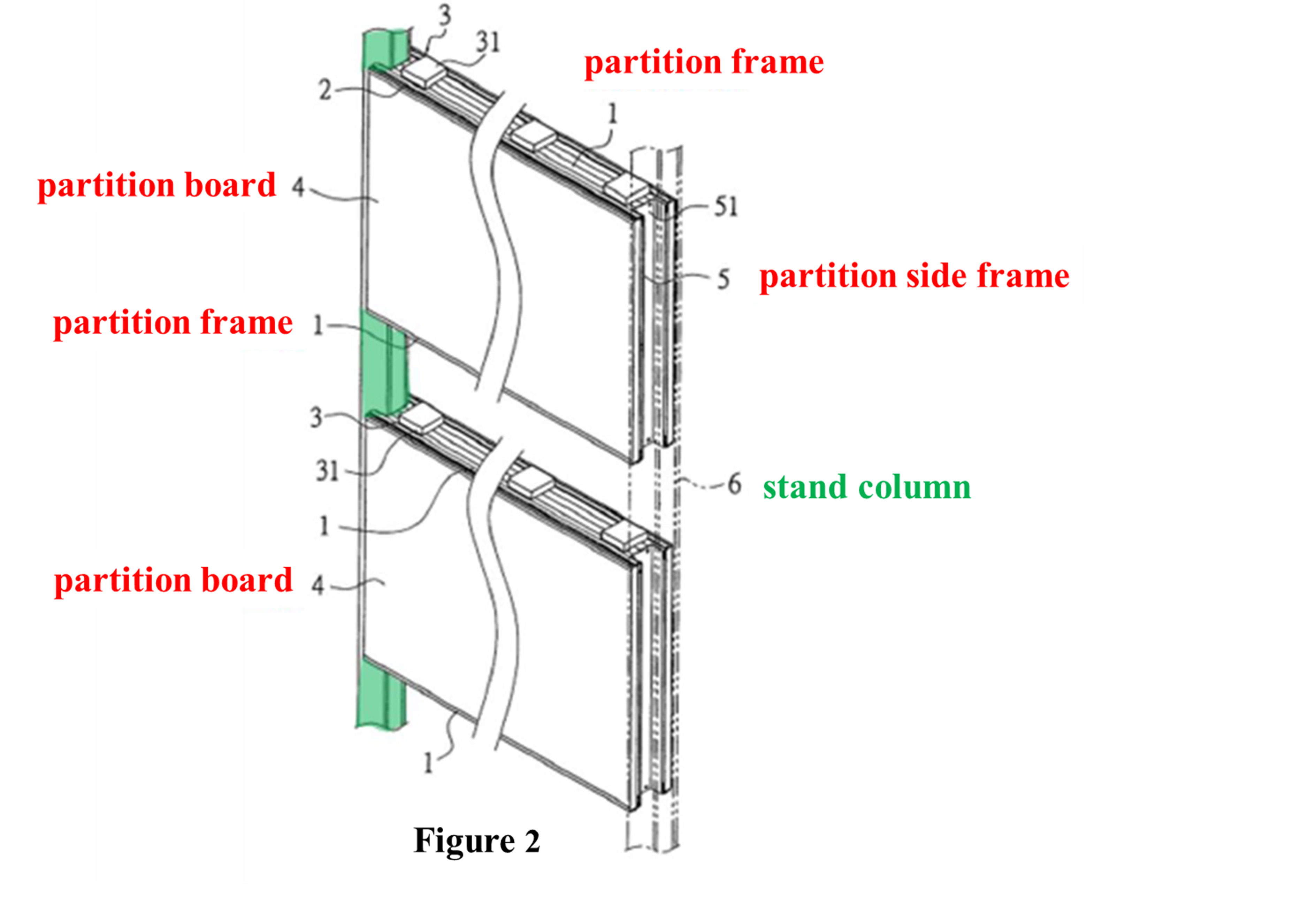
Comparison Table of the ‘498 Patent and the Exhibits
| Claim 1 of the ‘498 patent | Corresponding exhibit | |
|---|---|---|
| Technical feature A | A construction formwork component comprising: a plurality of metal formworks stacked in a stack direction so that the metal formworks together form a wall, each of the metal formwork comprises an inner face; and | Exhibit 2 |
| Technical feature B | at least one support rod fixedly connects the plurality of the metal formworks to support the metal formwork and the wall; | Exhibits 3, 4 |
| Technical feature C1 | further comprising at least one reinforcing component, which fixedly connects the inner faces of each of the metal formwork, and | Exhibit 2 |
| Technical feature C2 | the reinforcing component singly extends its length in the direction of extension of the support rod, so that the reinforcing component connects the plurality of metal formworks stacked in the direction of extension of the support rod at the inner faces. | none |
Assertions of the IPO and the Invalidation Requester
1.The technical feature of the reinforcing component can be simply changed by a person ordinarily skilled in the art based on Exhibit 2:
While the patentee argued that the “reinforcing component” has the efficacy of improved support. However, the IPO considered that according to paragraph [0005] of the specification, the efficacy the patentee claimed can still be achieved without the reinforcing component. Thus, the metal formwork with the reinforcing component is merely one of the embodiments of the ‘498 patent, and the “reinforcing component” is not an essential technical feature. Even if there is some slight difference in the straight rod of Exhibit 2, the slight difference can be simply changed by a person ordinarily skilled in the art.
2.There is motivation to combine Exhibits 2, 3, and 4
The straight rod of Exhibit 2 is substantially equivalent to the technical feature of “the reinforcing component singly extends its length in the direction of extension of the support rod, so that the reinforcing component connects the plurality of metal formworks stacked in the direction of extension of the support rod at the inner faces” of claim 1 in the ‘498 patent. The main difference between Exhibit 2 and the ‘498 patent is that Exhibit 2 does not disclose the “support rod” in the ‘498 patent, but Exhibits 3 and 4 have disclosed the technical features of the “support rod” equivalent to that of the‘498 patent. Moreover, a formwork and a partition wall both belong to the technical field of construction, therefore, a person ordinarily skilled in the art can easily combine Exhibit 2 with Exhibits 3 or 4, and claim 1 in the ‘498 patent does not involve an inventive step.
Opinions of the IP Court
1.The reinforcing component is an essential technical feature of ‘498 the patent, and not a simple change of the prior art:
The scope of the claims shall be defined by the whole literal text. Now that claim 1 of the ‘498 patent has described the technical feature “the reinforcing component singly extends its length in the direction of extension of the support rod, so that the reinforcing component connects the plurality of metal formworks stacked in the direction of extension of the support rod at the inner faces.”, the technical feature is a part of the technical content of the claim and cannot be ignored. Moreover, paragraph [0017] in the ‘498 patent has disclosed that a single reinforcing component can improve the support efficacy between the metal formworks, in order to solve the problem of insufficient structural strength disclosed in paragraph [0004] of the ‘498 patent.
Therefore, the technical feature “the reinforcing component singly extends its length in the direction of extension of the support rod, so that the reinforcing component connects the plurality of metal formworks stacked in the direction of extension of the support rod at the inner faces” in claim 1 is an essential technical feature.
In addition, in terms of the technical means adopted and the technical effects achieved, Exhibit 2 is still different from Claim 1 of the ‘498 patent. The single reinforcing component in Claim 1 of the ‘498 patent is not a simple change of the straight rod 3 in Exhibit 2.
2.No motivation to combine Exhibits 2, 3, and 4:
The purpose of the invention of Exhibit 2 is to provide an exterior wall formwork for construction which solves the problem of screw bolt correspondence, wherein, according to the content of paragraph [0034] of Exhibit 2, it is known that the gap between the metal plate and the wooden formwork needs to be filled with concrete.
In contrast, Exhibit 3 is a systematic partition wall and Exhibit 4 is a partition/screen structure. Referring to the contents of Exhibit 3 and Exhibit 4, it is clear that the systematic partition wall of Exhibit 3 and the partition/screen structure of Exhibit 4 do not need to be filled with concrete.
Accordingly, the problems to be solved are different between Exhibits 2 to 4, and the functions or operations of Exhibits 2 to 4 have no commonality. Exhibits 2 to 4 do not provide any teachings or suggestions to the aforementioned distinguishing technical features of Claim 1 in the ‘498 patent, and a person ordinarily skilled in the art does not have a reasonable motivation to combine the technical contents of Exhibits 2 to 4.
Wisdom Suggested Strategies
In this case, the patentee added the technical feature of “reinforcing component” by filing a post-granted amendment to distinguish the claimed invention from the exhibits. Without providing specific supporting information, the IPO concluded that the “reinforcing component” was not an essential technical feature and generated no beneficial effect, and therefore was a simple change of the prior art. However, the IP Court revised the judging approach of the IPO , pointing out that since the technical content of the “reinforcing component” has been described in claim 1 of the ‘498 patent, and the specification also described the effect of the “reinforcing component”, it was clearly an essential technical feature of the ‘498 patent.
Furthermore, the ‘498 patent is related to a formwork for construction, which belongs to a relatively mature technology field. Due to the less flexible development, there are many prior arts with similar components, but their applications, problems to be solved, or the like are different. Under such circumstances, the examiners are likely to be too hasty and may judge based on a “hindsight” with regards to “whether a person ordinarily skilled in the art would have a motivation to combine multiple citations” when determining an inventive step. The IP Court pointed out that Exhibit 2 was used for the exterior wall of the construction, such as a scaffolding, and it was hard to combine it with Exhibits 3 and 4, which were used for the partition wall of the interior decoration. Also, the three exhibits were different in the aspects of the problem to be solved and the functions or operations. Thus, a person ordinarily skilled in the art would not have a motivation to combine these exhibits.
Although the technical content of this case is relatively simple, the examiners made a subjective judgement when determining an inventive step. Therefore, the IP Court specified the mistakes made by the IPO at each key points of the judging steps, which is quite worth noting.






